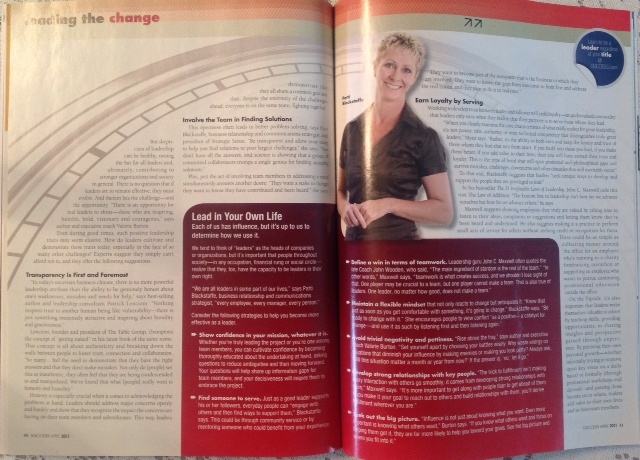When leaders’ egos reach destruction.
Legitimate power is about control; legitimate leadership is about influence.
Over the years, incidents of misconduct, fraud and scandal show us how easy it is to promote sly controllers, egomaniacs, and narcissists — often ignoring the better impact of positive, influential leaders. Cases like executives from France’s Telecommunication Company Orange, convicted of moral harassment related to a spate of worker suicides, and the #MeToo movement that highlighted people like Harvey Weinstein and over 200 others show the depth of pathology. The fall of Uber’s Travis Kalanick and the FTX Collapse scandal highlights a different form of privileged entitlement. All of these cases involved a form of legitimate power—people in high-level positions of authority granted the ability to make poor and destructive decisions.
Boards, HR & legal departments conspire to protect the powerful while failing employees or customers. When bad behaviour goes unchecked, the power-hungry egos become emboldened, and these folks believe they are above the rules.
Many companies fail in oversight and measurable tracking, and some exhibit a silent tolerance for despicable behaviour.
What’s the difference between someone with legitimate power and legitimate leadership? Again, control and influence.
Legitimate power is wielding control granted by position, title, or authority. It’s when someone is granted a level of power and can exert authority in self-determining ways. Policemen, judges, and politicians all hold legitimate power. Most people in these roles have genuinely good moral value systems.
However, when granting legitimate power to someone with narcissistic tendencies, deep-seated racism, or discriminatory leanings – and the ego is left unchecked, decisions usually favour their self-serving interests first. They justify their choices by fooling themselves and others that what they do is best for the company while causing substantial risk to the organization.
Legitimate leadership, however, is practiced by those who view leadership as a privilege—using their position or title to serve the organization. First and foremost, they maintain a wise, fair, and equitable use of power. Communication, shared values, accountability, and responsibility are strong characteristics in leading others. Rather than control, they mobilize others to solve problems.
Legitimate leaders are lifelong learners with an open mindset investing deeply in their team and making good decisions with the company’s best interest at heart. That learning attitude is about seeking mastery, and to seek mastery, one must be willing to change course once a lesson has shown a better way. They develop others with a commitment to fairness, equity and transparency.
How do toxic leaders get through the ranks?
At promotion time, it’s not easy to distinguish the person who will lead a company toward scandal because the ego-driven, self-centred power freak manages the chain of command very well. It isn’t until they land high enough up the ladder that the organization starts getting nervous. They’re ripe for causing significant damage by this time, and still, it’s protected or ignored until scandals or whistleblowing create big public relations nightmares.
Companies are as responsible as bad leaders.
“We never saw the signs!” is a pathetic excuse, and it falls flat for anyone who understands the power of good governance; people always see it coming. Maybe not the executive or the board (although that would surprise this author.)
- As low-level employees, the bad actor’s peers see all the signs, but their bosses typically only witness the charm.
- Once leading others, their direct reports either suffer in silence or, when they report, are bullied, harassed, or driven out of the company. (Don’t even get me started about how HR and Legal’s roles are to protect the company from its employees.) Keeping it under the rug is habitually the first choice—private buy-outs and implementing Non-disclosure agreements to buy the complainer’s silence.
- The rules apply only to those without power, but those with power can act on a whim. Once they finally reach the executive level, all the protection and free passes of their behaviour reassure them that the company will continue to gloss over their actions, no matter what they do. This stage is when the scandals usually break because the bad actor is careless in their actions or emboldened to take things too far.
Bad leaders do not act alone. They always gather a group of supporters with the same value system to protect, lie for, or diminish. If the CEO is the bad actor, the board knows, primarily if they govern the financial decisions responsible for the legal payouts.
Corporate Boards of Directors who wait until a scandal breaks may very well have been derelict in their duty of care.
A Board’s responsibility is to put the organization above any individuals, including themselves. Duty of loyalty is not about loyalty to the executive club of pals; it is, first and foremost, to the corporate entity.
How can boards and companies solve this?
They must put some mechanisms in place to protect the company and its employees. Here is how that can look:
- A set of well-articulated policies with clear consequences digitally tracked, versioned, and with proof of attestation, stating employees have read and understood each one. Ensure your policies include clear definitions of bullying, harassment, and discrimination. Make policy review a non-negotiable requirement with a yearly refresh.
- Enforce equity of consequences for executives through to employees, with all levels attending to the same tolerance levels.
- An anonymous Speak Up system for reporting harassment, bullying, violence, and fraud separate from OHS incident reporting.
- Put a 3rd party investigation company in place for reports with a lack of neutrality, absence of qualified internal investigators, a lack of trust, profound complexity, or resulting in potential litigation. Typical HR and internal personnel are usually highly unqualified to deal with these complaints.
- Place your audit committee in a neutral department, not reporting to any other department and have them report directly to the board. Their budget is paid for by the departments when requiring their services for that department. This setup also acts as a detractor to poor behaviour.
- Track all data patterns that matter. When a department must provide a budget for an audit to investigate, there will be records; track those. There will be high turnover in specific teams; track that. There will be multiple patterns of complaints about particular people; track those.
- Document patterns of abusive or coercive behaviour; do not sweep them under the rug. Abusive people always escalate behaviours if left unchecked.
- Place ethics, integrity, and behaviour on the board agenda. Without exposing private or confidential details, do show patterns of frequency and areas of concern.
- Train select people from your neutral audit department in trauma-informed response, and certify them in workplace investigations.
The more significant risk to an organization than protecting the company from a series of single cases is the reputational damage caused by a scandal when those cases compound and the public becomes aware.
The injury caused to even one individual is harm caused to the organization.
That is not an exhaustive list, but it would be a start to ensuring that companies are not complicit in letting leadership power be left to foster a culture that lacks integrity or creates undue harm.
Setting a leadership tone must be the responsibility of a Board of Directors intent on protecting the company and the reputation of that company. Hiding harmful behaviours will always come to light in the end; stopping them before they go too far is critical to the organization’s health.
____________________________________
GlobalSway works with executives and boards in their governance refresh efforts. Facilitating governance efforts or supporting the implementation of the Corethix Platform. Read more on our Organizational Governance page or sign up for your Corethix Free Trial.




